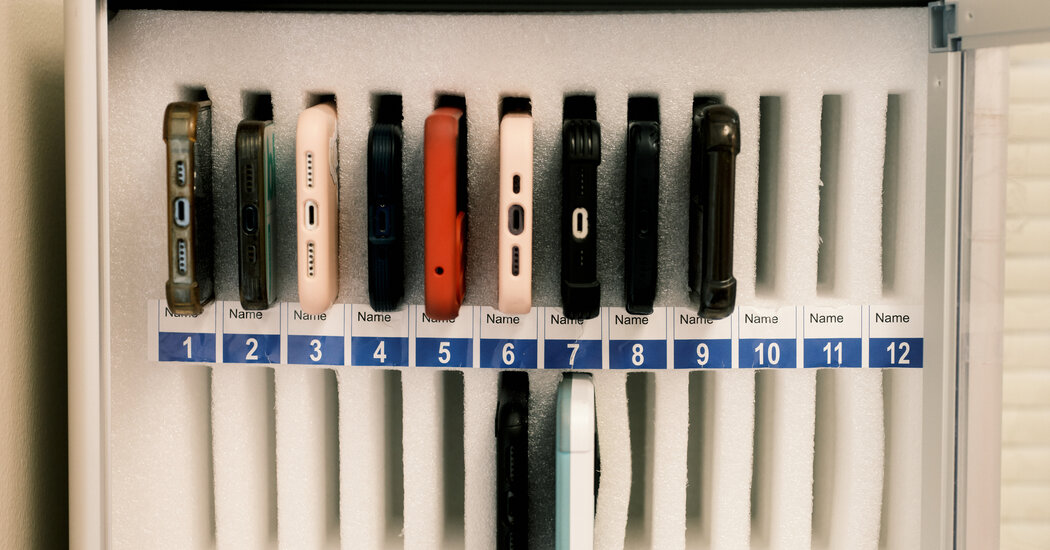Physical Address
304 North Cardinal St.
Dorchester Center, MA 02124
Physical Address
304 North Cardinal St.
Dorchester Center, MA 02124

New York Gov. Kathy Hochul on Monday announced her intention to limit cell phone access in schools for students in kindergarten through 12th grade as part of her latest effort to address children’s addiction to the devices.
In a statement, which provided no other details, the governor said she would include the legislation in her budget proposal for the next fiscal year. She cited the initiative as a follow-up to one of her key accomplishments last year, passing legislation designed to protect young people from addictive social media algorithms. She cited a Pew Research poll that found 72 percent of high school teachers described student distractions with cellphones as a “big problem.”
“Young people succeed in the classroom when they are learning and growing — not clicking and scrolling,” Governor Hochul said Monday. “My upcoming budget proposal will lay out a new state standard for distraction-free learning in schools across our state.”
Speaking to high school and college students at Hudson Valley Community College on Monday, the governor acknowledged that restricting cellphone use could make her “very unpopular.”
Los Angeles Unified became the largest school district in the United States to ban cell phones last year. Virginia, Ohio and Minnesota are among the states that have started to crack down on devices in schools.
New York City Mayor Eric Adams abandoned a plan to ban cell phones in schools in August, saying the city was “not there yet.”
In September, the New York State United Teachers union called for a “bell-to-bell” policy that would limit cell phone use from first class until dismissal. The union’s president, Melinda Person, said the union worked closely with the governor to develop the plan.
But the idea also has its opponents. Some New York parents who were students during the 9/11 terrorist attacks expressed reservations about losing the ability to contact their children in an emergency. Directors wondered who would foot the bill for the phone collection equipment. And some teachers wondered how they were expected to discipline students who broke the rules.
In a statement Monday, a spokeswoman for the United Federation of Teachers, New York’s teachers union, said the organization supports state and city restrictions on cellphones in public schools, as long as a number of conditions are met.
The union said teachers should not be responsible for enforcing the restrictions; school districts should bear the costs instead of individual schools; implementation should be consistent from student to student; and schools should have emergency contact lines set up for parents.
Many of New York’s more than 1,500 public schools already restrict cell phone use. Some high schools require children to put their phones in compartments along the walls of their classrooms. Many high schools distribute locked canvas phone cases that students carry in their bags during the school day.
Brad Hoylman-Sigal, a state senator who represents much of Manhattan’s west side, introduced a bill last week that would ban students from using their phones on school property. He said he sees his bill as a starting point for a conversation in the State Senate.
He said he hopes the governor’s plan will include a way for students to safely turn in their phones and then get them back at the end of the day.
“As the parent of a 14-year-old daughter, I understand how disruptive phones are in the learning environment,” said Senator Hoylman-Sigal. “At the same time, I appreciate that parents want their kids to have their phones when they’re on the subway or the bus. So I hope the governor’s proposal addresses both of those needs.”
Speaking at the community college on Monday, Gov. Hochul described what she heard from students who told her they struggled to put their phones away because they were afraid they would “miss something.”
“There is so much pressure on all of you and I have to help you with that,” she told the students. “That’s my job.”
Troy Closson and Benjamin Oreskes contributed reporting.